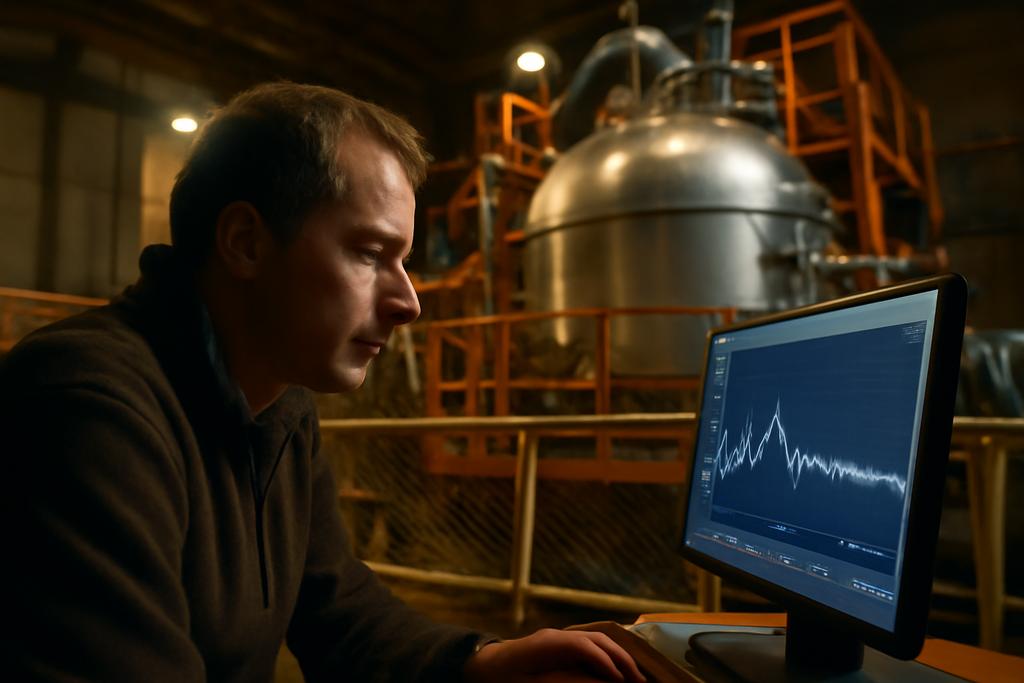Listening to the Universe’s Quietest Messengers
Neutrinos are the universe’s most elusive phantoms. They flood through us by the trillions every second, yet they barely interact with matter, slipping through planets, stars, and people alike. Detecting these ghostly particles is like trying to hear a whisper in a hurricane. But what if we could not only hear them but also eavesdrop on their subtle dance with atomic nuclei? This is the promise of the NUCLEUS experiment, a bold endeavor led by physicists at the Technical University of Munich (TUM) and collaborators across Europe, aiming to catch neutrinos in the act of coherent elastic scattering—a process so delicate it was only observed for the first time in 2017.
Why Catching Neutrinos Matters
Neutrinos are fundamental to understanding the cosmos and the laws that govern it. They carry information from the heart of stars, nuclear reactors, and even the Big Bang. The process NUCLEUS targets—coherent elastic neutrino-nucleus scattering (CEνNS)—is a subtle interaction where a neutrino gently nudges an entire nucleus, causing it to recoil ever so slightly. This interaction was predicted over 40 years ago but remained experimentally out of reach until recent advances in detector technology.
CEνNS opens new windows into neutrino physics, offering a way to probe physics beyond the Standard Model, test nuclear structure, and even monitor nuclear reactors for non-proliferation efforts. However, detecting these tiny recoils, often less than a thousandth of a kilo-electronvolt (keV), demands extraordinary sensitivity and control over background noise.
NUCLEUS’s Cryogenic Calorimeters: Tiny Thermometers at Near Absolute Zero
At the heart of NUCLEUS are gram-scale cryogenic calorimeters—ultra-sensitive detectors cooled to temperatures just a fraction above absolute zero. These detectors, made from crystals like calcium tungstate (CaWO4) and sapphire (Al2O3), are equipped with tungsten transition-edge sensors (TES). Think of TES as exquisitely sensitive thermometers that detect the faintest heat pulses generated when a neutrino scatters off a nucleus.
Operating at millikelvin temperatures, these detectors can measure energy deposits as low as 20 electronvolts (eV), akin to detecting the warmth of a single candle flame from miles away. This sensitivity is crucial because reactor neutrinos produce nuclear recoils with energies below 1 keV, a realm where conventional detectors falter.
Commissioning at Munich: A Dress Rehearsal for the Reactor Stage
Before setting up at the Chooz nuclear power plant in France, where two powerful reactors generate a flood of antineutrinos, the NUCLEUS team conducted a commissioning run at TUM’s shallow underground laboratory. This phase was a critical test of the experiment’s components working in concert: the cryogenic detectors, active and passive shielding, and muon veto systems designed to tag cosmic rays that could mimic neutrino signals.
Over eight weeks, two target detectors operated stably, demonstrating energy resolutions around 5.5 to 6.5 eV and maintaining consistent performance despite the challenges of vibration and environmental noise. The muon veto system efficiently identified cosmic ray events with over 98% efficiency, a vital feature to reduce false positives.
Background Noise: The Experiment’s Persistent Nemesis
One of the most daunting challenges in detecting CEνNS is distinguishing genuine neutrino interactions from background events. These backgrounds come from cosmic rays, natural radioactivity, and an enigmatic low-energy excess (LEE) observed in many low-threshold experiments. The LEE manifests as a sharp rise in event rates below a few hundred eV, dwarfing the expected neutrino signal by orders of magnitude.
NUCLEUS’s commissioning run provided valuable data to benchmark detailed simulations of these backgrounds. The team found good agreement between measured and simulated backgrounds at energies above 1 keV, validating their shielding and veto strategies. However, the LEE remains a stubborn puzzle, dominating the signal region and demanding innovative mitigation techniques.
Innovations on the Horizon: Double-TES and Instrumented Holders
To tackle the LEE, the NUCLEUS collaboration is pioneering the use of double-TES detectors and instrumented silicon holders. The double-TES design allows the detectors to differentiate between genuine particle interactions and spurious signals linked to the sensors themselves. Meanwhile, instrumented holders act as an inner veto, identifying events caused by mechanical stress or surface contamination.
These advancements, combined with the full complement of shielding layers—including boron carbide neutron absorbers—will be deployed in the upcoming technical run at Chooz in 2026. This next phase aims to demonstrate the experiment’s readiness to detect CEνNS from reactor antineutrinos for the first time using cryogenic calorimeters.
Why This Matters Beyond Particle Physics
Detecting CEνNS with precision opens doors beyond fundamental physics. It can enable compact, non-intrusive reactor monitoring, enhancing nuclear security by verifying reactor operations remotely. Moreover, understanding neutrino interactions at low energies informs astrophysics, dark matter searches, and the quest for new physics phenomena.
The Quiet Revolution in Neutrino Detection
NUCLEUS exemplifies how pushing the boundaries of detector technology and experimental ingenuity can transform whispers from the universe into a symphony of discovery. By mastering the art of listening to neutrinos’ faintest nudges, scientists are poised to unlock secrets hidden deep within reactors and stars, enriching our understanding of the cosmos and the fundamental forces that shape it.
As the experiment moves from its successful commissioning at TUM to the reactor halls of Chooz, the physics community watches with anticipation. The faint signals of CEνNS may soon become a new language through which neutrinos tell their stories—stories that have traveled across the universe, waiting patiently to be heard.










